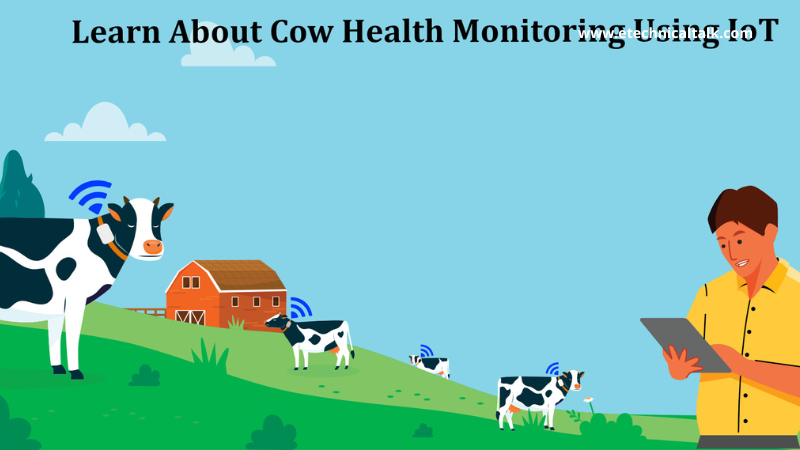Cattle farming is a major industry in all countries because, even though being vegan is nowadays a trend, there has still been a drastic increase in cow milk consumption over the past half-decade, hovering around 549 million metric tons each year. Cow health monitoring using IoT
India stands first in consuming most cow milk worldwide, with 87 million metric tons of milk consumption.
When milk and its by-products are so important to a nation, demand increases, and it becomes more important to monitor and ensure the health and well-being of your cattle. However, the standard practices of booking a veteran and monthly check-ups are time-consuming and expensive.
PsiBorg develops smart livestock monitoring solutions like IoT-based cow health monitoring systems, livestock tracking systems, and dairy farm management systems.
Let’s get an in-depth insight into cow health monitoring using IoT and figure out why you need one for your livestock business.
Keep an Eye on Your Cow’s Health With Wearable Trackers
To fulfill the demands of the continuously growing population and to get profit, it’s now necessary to become self-efficient. The Internet of Things is the only technology that can empower you with all the data and insights you need to increase the efficiency of your farm.
The IoT-based cattle health monitoring system automates the farm management process by continuously monitoring the health of the cows.
Cow health monitoring using IoT is an intelligent health monitoring system that utilizes sensors and WSN (wireless sensor networks) for tracking various health parameters in real-time in dairy cows.
The cow health monitoring system includes a wearable device (neck belt) and a mobile/ web dashboard. The system is developed with individual nodes, making it very economical even for small-scale farmers. The system utilizes GSM/GPRS technology, to offer direct communication, which means there are no distance-specific restrictions.
The system collects cow’s health data through the sensors embedded in the main device. The sensors utilized here are body temperature sensors, heart rate sensors, step counting sensors, posture tracking sensors, and activity monitoring sensors.
The system comes with alert and notification features. So, if any abnormality occurs, the cattle management team will receive an alert on their phones.
Top Use Cases of Cow Health Monitoring Using IoT
IoT solutions open up various possibilities for the farmers and cattle farming industry to improve their livestock health using remote monitoring and tracking for better data-driven decision-making. Some of the interesting use cases of a cow health monitoring system are:
Health Level Monitoring
Monitoring the health status of cows in real-time to detect and prevent any illness. The cow health monitoring system utilizes wearables like a neck belt and pedometer that collect the cow’s body data and transmit it to the server. The neck belt device comes with built-in sensors that capture the data and notify the farmers about all parameters.
Monitoring the health status of livestock will result in a significant reduction in livestock feeding issues and veterinary expenses.
Location Tracking
Cows have the habit of going beyond boundaries while grazing, and finding them can be a tiring task. However, in the cow health monitoring system, we can integrate the geo-fencing feature. By using geo-fencing, the farmers can create virtual boundaries for their cows, and if the cow moves beyond the specified virtual boundary, the farmers will get a real-time alert along with the live location.
Reproductive Cycle Monitoring
It’s important to observe the reproductive cycle of animals to initiate AI. But, observing cow’s reproductive cycles in traditional ways is very tedious, and an IoT solution can make this task very easy.
To be more precise, a connected IoT device will monitor and measure the heat period of a cow, as cows can be in heat for almost 8 hours. The system will also notify the farmers if the cow goes through labor, thus making the entire calving process safer and easier.
Maximizing Livestock Livelihood
Managing and monitoring the entire herd is also a very tedious task, especially when the number of cows is large. IoT always comes to the rescue. With the help of IoT devices, one can monitor the cattle’s movements with their behaviors like ruminating, lying down, or pasturing.
The sensors fitted in the IoT device will also allow the farmers to monitor the grazing patterns and decide at what time the cow needs to be milked and how much food the cow will consume based on its activity.
To Conclude,
The cow health monitoring system is basically a tracking solution — a major application of Internet of Things technology.
This aforementioned tracking solution can have several other applications as well, like monitoring other types of livestock and pets.
So, if you are looking for a solution to track and manage your farm/poultry animals more efficiently, then PsiBorg’s cow health monitoring system is the solution that you need.
They offer an IoT-based cow health monitoring system that provides 24/7 monitoring of your herd, interprets your cows’ health parameters, and detects diseases to address their individual needs and optimize resource use.
Visit the PsiBorg website to get more information on the same.
For more interesting blogs go here:- Etechnictaltalk














